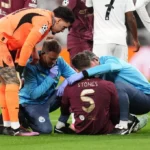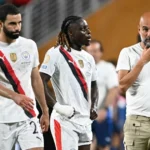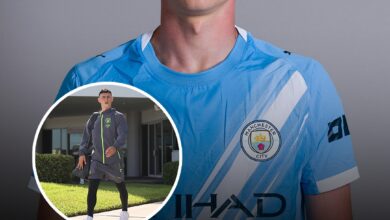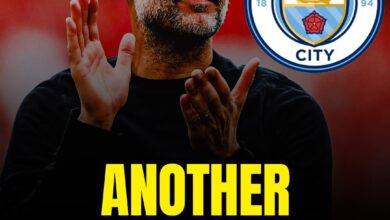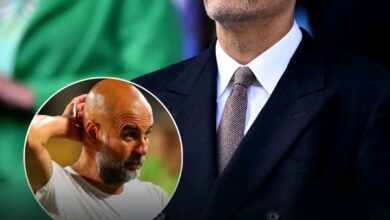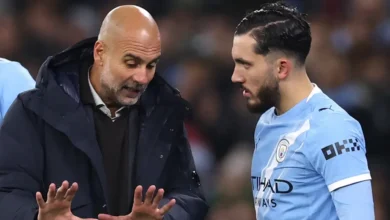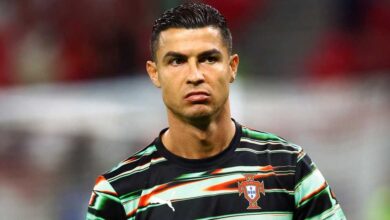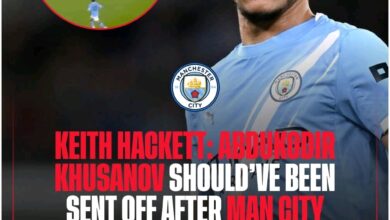Man City player return to training
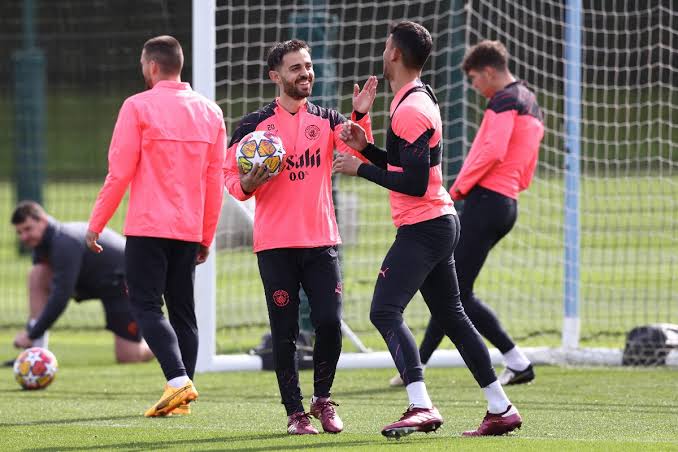
Under the sweltering June sun of South Florida, Manchester City’s training ground at Lynn University buzzed with an energy that had been absent for months. Among the meticulously maintained pitches of Boca Raton, where palm trees swayed gently in the Atlantic breeze, a familiar figure commanded attention as he moved with the fluid grace that had made him one of England’s most dependable defenders. John Stones, Manchester City’s stalwart centre-back, was finally back where he belonged – fully engaged in competitive training and ready to reclaim his position at the heart of Pep Guardiola’s defensive structure.
The significance of this moment extends far beyond the simple return of an injured player to fitness. For Manchester City, Stones’ participation in their first American training session represents the potential restoration of defensive stability that has been conspicuously absent throughout a season marred by inconsistency and adaptation. The 31-year-old’s presence on the training pitch signals not just personal triumph over adversity, but also the renewal of tactical options that could prove decisive in their pursuit of Club World Cup glory.
As Guardiola observed his squad navigate through complex tactical drills, the sight of Stones seamlessly integrating into defensive rotations and ball-playing exercises must have provided immense satisfaction. Here was evidence that months of careful rehabilitation, medical expertise, and unwavering commitment had culminated in the return of a player whose influence on Manchester City’s defensive philosophy cannot be overstated.
The road to this moment began with disappointment on one of European football’s grandest stages. February 19 marked the beginning of what would become John Stones’ longest injury layoff in recent memory, as a seemingly routine Champions League encounter against Real Madrid at the Santiago Bernabéu transformed into the catalyst for months of uncertainty and rehabilitation.
The 3-1 defeat to Real Madrid was painful enough for Manchester City’s European ambitions, but the thigh injury that forced Stones from the field during that play-off tie would prove to have far more lasting consequences than the result itself. What initially appeared to be a minor muscular problem gradually revealed itself as a complex injury requiring extensive treatment and careful management.
The nature of Stones’ injury highlighted the delicate balance that modern football demands from its elite performers. At 31, with over a decade of professional football behind him, his body had accumulated the wear and tear inevitable in a sport that demands explosive movement, aerial duels, and constant physical contact. The thigh problem that emerged in Madrid was not simply an isolated incident but rather the manifestation of accumulated stress and the natural aging process that affects even the most carefully conditioned athletes.
Throughout the spring months, Manchester City’s medical team, led by some of the sport’s most respected physiotherapists and conditioning experts, worked tirelessly to address not just the immediate injury but also the underlying factors that had contributed to Stones’ vulnerability. The rehabilitation process involved cutting-edge recovery techniques, personalized training regimens, and constant monitoring to ensure that his return to action would be sustainable rather than merely temporary.
The silence surrounding his progress during this period was both deliberate and necessary. Manchester City’s approach to injury management has always emphasized caution over speed, recognizing that premature returns often lead to more serious setbacks. This philosophy, while sometimes frustrating for supporters eager for updates, reflects a long-term commitment to player welfare that has served the club well throughout Guardiola’s tenure.
Stones’ absence created ripple effects throughout Manchester City’s tactical structure that extended far beyond simply replacing one defender with another. His unique skill set – combining exceptional ball-playing ability with defensive solidity and the versatility to step into midfield when required – had made him an integral component of Guardiola’s possession-based system.
Without Stones available, Manchester City were forced to reconsider their defensive partnerships and adjust their tactical approach accordingly. The most successful adaptation saw Josko Gvardiol, who had been primarily deployed as a left-back since his arrival from RB Leipzig, transition into central defense to partner Ruben Dias. This partnership, born of necessity, gradually developed into one of the season’s most positive developments.
Gvardiol’s attributes as a centre-back proved remarkably well-suited to Guardiola’s requirements. His pace and athleticism provided cover for the high defensive line that Manchester City employs, while his technical ability ensured that the team’s build-up play from defense remained fluid and progressive. The Croatian international’s comfort on the ball and his ability to carry possession forward helped maintain City’s tactical identity even without Stones’ specific contributions.
However, Gvardiol’s move to central defense created its own complications. His absence from left-back weakened City’s defensive width and reduced their attacking threat down the left flank. The ripple effect of Stones’ injury thus extended throughout the team’s structure, requiring adjustments in multiple positions and tactical approaches.
The defensive instability manifested itself in Manchester City’s overall performance throughout the season. While individual matches were won and tactical battles successfully navigated, the absence of Stones’ calming influence and organizational skills was evident to those who understood the subtleties of defensive play. His ability to read the game, communicate with teammates, and make crucial interceptions had been taken for granted until they were no longer available.
Moreover, Stones’ aerial presence was sorely missed in both defensive and attacking situations. His height and timing in aerial duels had often proved decisive in preventing opposition scoring opportunities, while his threat from set-pieces had provided City with an additional attacking dimension. The loss of these attributes forced tactical adjustments that, while successful in many respects, never fully compensated for his unique contributions.
Just as speculation about Stones’ future was reaching its peak, an unexpected development emerged from the England national team setup. Despite his prolonged absence from competitive football, the defender received a surprise invitation to join England’s training camp in Spain ahead of their World Cup qualifier against Andorra in Barcelona.
This invitation, extended by Thomas Tuchel’s coaching staff, represented a significant vote of confidence in Stones’ long-term prospects. While he ultimately wasn’t selected for the match squad, the decision to include him in the training camp suggested that his rehabilitation was progressing more favorably than public reports had indicated.
The reasoning behind England’s decision was multifaceted. Firstly, it provided the coaching staff with an opportunity to assess Stones’ physical condition firsthand, allowing them to make informed decisions about his potential involvement in future international fixtures. Secondly, it maintained his connection with the national team setup during what could have been a period of isolation and uncertainty.
For Stones personally, the international recognition provided crucial psychological support during a challenging period. The invitation validated his efforts during rehabilitation and reinforced his belief that his international career remained viable despite the injury setbacks. Training alongside England teammates also provided additional motivation and a different environment in which to test his recovering fitness.
The experience with England proved beneficial in multiple ways. The change of scenery, different coaching methods, and opportunity to work with players from other clubs provided Stones with fresh perspectives on his game and his recovery. The session intensity and tactical demands of international training also served as valuable preparation for his eventual return to Manchester City’s demanding regime.
Tuchel’s decision to invite Stones despite his lack of recent competitive action demonstrated the respect he commands within English football. His experience, leadership qualities, and proven ability at the highest level made him a valuable addition to the squad even without the guarantee of selection. This recognition from the national team setup provided additional evidence that his career was far from over.
The FIFA Club World Cup represents more than just another tournament for Manchester City. It stands as an opportunity to claim a trophy that has thus far eluded a club that has achieved remarkable success under Guardiola’s guidance. The expanded format, featuring 32 teams from six confederations, presents unique challenges and opportunities that will test every aspect of City’s squad depth and tactical flexibility.
City’s path through the tournament begins with a group stage that includes encounters with Wydad AC in Philadelphia, Al Ain in Atlanta, and Juventus in Orlando. The geographical spread of these fixtures across the United States adds complexity to squad management, with travel considerations, climate adaptation, and unfamiliar venues all requiring careful planning and preparation.
The timing of Stones’ return to full fitness could hardly be more fortuitous. His availability provides Guardiola with tactical options that had been absent for much of the season, while his experience in high-pressure situations could prove invaluable as the tournament progresses. The defender’s composure under pressure and ability to perform in crucial moments are qualities that often determine the outcome of knockout competitions.
The Club World Cup format, with its mix of familiar and unfamiliar opponents, will test different aspects of City’s game. Against European opposition like Juventus, Stones’ experience and tactical understanding will be crucial. When facing teams from other confederations, his adaptability and reading of the game will help City navigate different playing styles and tactical approaches.
The tournament also provides an opportunity for Stones to demonstrate that his lengthy absence has not diminished his effectiveness. A strong performance in the Club World Cup would not only contribute to City’s trophy ambitions but also validate the patient approach taken to his rehabilitation and return to action.
Stones’ return to training coincided with the first sessions for several new signings, creating an atmosphere of renewal and optimism at Manchester City’s Florida base. The integration of fresh talent alongside the return of established players represents the kind of squad evolution that has characterized successful periods in the club’s recent history.
Marcus Bettinelli’s arrival as an experienced goalkeeper provides additional depth and competition in a position where City had identified the need for reinforcement. His Premier League experience and proven ability at the highest level make him an immediate asset, while his presence allows for greater rotation and squad management during demanding periods.
The acquisition of Rayan Ait-Nouri addresses one of the most pressing tactical concerns created by Gvardiol’s move to central defense. The Algerian left-back brings pace, attacking threat, and defensive solidity that should allow City to restore their preferred tactical shape while maintaining the successful Gvardiol-Dias partnership in central defense.
Tijjani Reijnders’ addition to the midfield ranks provides Guardiola with the creative options and technical ability that complement City’s possession-based approach. The Dutch international’s vision, passing range, and tactical intelligence align perfectly with the demands of City’s system, while his versatility allows for tactical flexibility in different match situations.
Perhaps most intriguingly, Rayan Cherki’s arrival represents both immediate impact potential and long-term investment. The young French winger’s pace, skill, and ability to operate across the attacking line provide Guardiola with additional options in the final third, while his age and development potential suggest significant future value.
The timing of these arrivals, coinciding with Stones’ return and the Club World Cup preparation, creates opportunities for accelerated integration. Tournament environments often facilitate team bonding and tactical understanding more rapidly than normal training periods, potentially allowing new signings to make immediate contributions.
The restoration of Stones to full availability creates fascinating tactical possibilities for Guardiola to explore. The most obvious benefit lies in the renewal of the traditional Stones-Dias partnership that had been so effective in previous campaigns. The understanding between these players, developed over years of collaboration, provides a stable foundation that allows other players to express themselves with greater freedom.
However, the success of the Gvardiol-Dias combination presents Guardiola with enviable selection dilemmas rather than straightforward solutions. Rather than simply reverting to previous partnerships, the manager now possesses the luxury of choosing between different defensive combinations based on tactical requirements and opponent analysis.
One particularly intriguing possibility involves deploying all three defenders in a back-three system, with Gvardiol operating as a left-sided centre-back, Dias anchoring the middle, and Stones providing balance on the right. This formation would maximize the ball-playing abilities of all three players while providing additional defensive security. The system would also enable greater attacking width from wing-backs, creating numerical advantages in wide areas that could prove decisive against defensively organized opponents.
Alternatively, Guardiola might choose to rotate his central defenders based on specific match requirements and opponent characteristics. Against teams that emphasize aerial threat and physical presence, Stones’ height and heading ability make him an obvious selection. When facing opponents with pace and direct running, Gvardiol’s athleticism and recovery speed might be preferred. This tactical flexibility represents one of the primary advantages of possessing a fully fit and available squad.
The psychological impact of having multiple viable options cannot be understated. Knowing that different tactical approaches are available based on circumstance and opponent allows for greater confidence in game planning and in-match adjustments. It also provides players with healthy competition for places, driving performance standards throughout the squad.
Beyond tactical considerations, Stones’ return provides Manchester City with invaluable leadership and experience that cannot be easily quantified but proves crucial in tournament situations. His calm demeanor under pressure, ability to organize defensive lines, and experience of performing in high-stakes matches represent assets that extend far beyond individual defensive actions.
For younger players in the squad, Stones’ presence provides both inspiration and guidance. His professional approach, dedication to recovery, and determination to return from setbacks set standards that influence the entire group dynamic. The example he provides of resilience in the face of adversity resonates throughout the squad and contributes to the winning mentality that Guadiola has cultivated.
The defender’s communication skills and tactical awareness also provide on-field leadership that complements the technical abilities of his teammates. His ability to read developing situations, organize defensive positioning, and make crucial interceptions often prevents dangerous situations from developing rather than requiring dramatic last-ditch interventions.
In tournament football, where margins are fine and individual moments can determine outcomes, the presence of experienced players who understand pressure situations becomes even more valuable. Stones’ previous experience in major tournaments, both with club and country, provides him with the mental tools necessary to perform when stakes are highest.
The approach taken to Stones’ rehabilitation reflects Manchester City’s sophisticated understanding of sports science and player development. Rather than rushing his return, the medical team focused on addressing the underlying factors that contributed to his injury vulnerability while building robust fitness that would sustain him through demanding competition periods.
Modern football’s physical demands require players to maintain peak condition across multiple competitions and extended seasons. For a 31-year-old defender, this presents particular challenges as recovery times naturally increase and injury susceptibility grows. The rehabilitation program designed for Stones acknowledged these realities while implementing strategies to maximize his longevity and effectiveness.
The conditioning work undertaken during his absence focused not only on healing the specific thigh injury but also on strengthening supporting muscle groups, improving movement patterns, and enhancing overall physical resilience. This comprehensive approach aims to reduce future injury risk while optimizing performance when he does return to action.
Load management will remain crucial as Stones reintegrates into competitive action. The Club World Cup’s compressed schedule and demanding travel requirements will test his physical readiness, making careful monitoring essential to prevent setbacks. The coaching staff’s experience in managing veteran players through challenging periods will be vital in optimizing his contributions while protecting his long-term availability.
Stones’ return extends beyond tactical and physical considerations to encompass the cultural and psychological aspects of squad management. His presence reinforces Manchester City’s commitment to their established players while demonstrating that the club supports individuals through challenging periods rather than discarding them at the first sign of difficulty.
This approach has broader implications for squad morale and loyalty. When players observe the club’s commitment to colleagues facing adversity, it reinforces their own sense of security and belonging within the organization. The knowledge that injuries and setbacks will be met with support rather than abandonment creates an environment where players can focus on performance rather than worrying about their futures.
The timing of Stones’ return, coinciding with new signings and preparation for a major tournament, creates optimal conditions for squad unity. Veteran players like Stones can help integrate newcomers while sharing their experience of City’s culture and expectations. This mentorship role adds value beyond his on-field contributions and helps maintain the continuity that has characterized successful periods in the club’s recent history.
The defender’s journey back from injury also provides inspiration for other squad members who may face similar challenges. His determination, professionalism, and ultimate success in returning to full fitness demonstrate the benefits of persistence and proper support systems. This example resonates throughout the organization and contributes to the resilient mentality that defines elite sport.
As Stones prepares to contribute to Manchester City’s Club World Cup campaign, questions about his long-term future inevitably arise. At 31, with significant injury history, realistic assessments must balance his continued quality with acknowledgment of natural aging processes and physical limitations.
However, his successful return to training suggests that reports of his decline may have been premature. The careful rehabilitation process, combined with Manchester City’s advanced sports science capabilities, appears to have restored him to competitive fitness. The key now lies in managing his involvement to maximize contributions while minimizing injury risk.
The Club World Cup represents an opportunity for Stones to demonstrate his continued value and potentially extend his career at the highest level. Strong performances in the tournament would validate the investment in his recovery while providing evidence that his best years may not be behind him.
From a legacy perspective, Stones’ potential contribution to Manchester City’s first Club World Cup triumph would add another significant chapter to an already impressive career. His journey from injury setback to tournament success would exemplify the resilience and determination that define elite athletes.
The Club World Cup now beckons as an opportunity for redemption, both personal and collective. For Stones, it represents the chance to prove that his contributions remain vital to Manchester City’s success. For the club, his return provides additional options and experience that could prove decisive in their pursuit of this elusive trophy.
The tournament will test every aspect of Manchester City’s preparation, from tactical flexibility to physical conditioning, from individual quality to collective determination. In John Stones, they possess a player whose journey embodies the values that define elite sport: perseverance through adversity, commitment to excellence, and the belief that setbacks are merely preparation for comebacks.
As the Florida sun set over the training facilities in Boca Raton, Manchester City’s squad could look ahead to their Club World Cup campaign with renewed confidence. The return of John Stones had restored balance to their defensive options while reinforcing the squad unity that has characterized their most successful periods. The stage was set, the players were ready, and a new chapter in Manchester City’s remarkable story was about to begin.
The true measure of Stones’ return will be determined in the matches ahead, but his presence alone has already achieved something significant: it has restored belief in the power of persistence and the value of never giving up. In tournament football, where fine margins often determine outcomes, such intangible qualities can prove just as valuable as tactical acumen or individual skill. John Stones was back, and Manchester City were ready for whatever challenges lay ahead.

